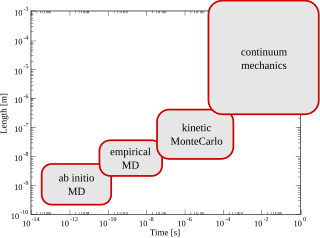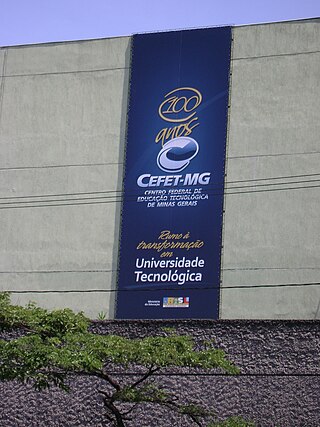Computational chemistry is a branch of chemistry that uses computer simulation to assist in solving chemical problems. It uses methods of theoretical chemistry, incorporated into computer programs, to calculate the structures and properties of molecules, groups of molecules, and solids. It is essential because, apart from relatively recent results concerning the hydrogen molecular ion, the quantum many-body problem cannot be solved analytically, much less in closed form. While computational results normally complement the information obtained by chemical experiments, it can in some cases predict hitherto unobserved chemical phenomena. It is widely used in the design of new drugs and materials.

Ubykh or Päkhy is an extinct Northwest Caucasian language once spoken by the Ubykh people, a subgroup of Circassians who originally inhabited the eastern coast of the Black Sea before being deported en masse to the Ottoman Empire in the Circassian genocide.

An academic discipline or field of study is a branch of knowledge, taught and researched as part of higher education. A scholar's discipline is commonly defined by the university faculties and learned societies to which they belong and the academic journals in which they publish research.

Trichloroethylene (TCE) is a halocarbon with the formula C2HCl3, commonly used as an industrial degreasing solvent. It is a clear, colourless non-flammable liquid with a chloroform-like sweet smell.
In computing, dataflow is a broad concept, which has various meanings depending on the application and context. In the context of software architecture, data flow relates to stream processing or reactive programming.
Aces II is an ab initio computational chemistry package for performing high-level quantum chemical ab initio calculations. Its major strength is the accurate calculation of atomic and molecular energies as well as properties using many-body techniques such as many-body perturbation theory (MBPT) and, in particular coupled cluster techniques to treat electron correlation. The development of ACES II began in early 1990 in the group of Professor Rodney J. Bartlett at the Quantum Theory Project (QTP) of the University of Florida in Gainesville. There, the need for more efficient codes had been realized and the idea of writing an entirely new program package emerged. During 1990 and 1991 John F. Stanton, Jürgen Gauß, and John D. Watts, all of them at that time postdoctoral researchers in the Bartlett group, supported by a few students, wrote the backbone of what is now known as the ACES II program package. The only parts which were not new coding efforts were the integral packages. The latter was modified extensively for adaptation with Aces II, while the others remained very much in their original forms.
In organic chemistry and biochemistry, a side chain is a chemical group that is attached to a core part of the molecule called the "main chain" or backbone. The side chain is a hydrocarbon branching element of a molecule that is attached to a larger hydrocarbon backbone. It is one factor in determining a molecule's properties and reactivity. A side chain is also known as a pendant chain, but a pendant group has a different definition.
Computational science, also known as scientific computing, technical computing or scientific computation (SC), is a division of science that uses advanced computing capabilities to understand and solve complex physical problems. This includes
NWChem is an ab initio computational chemistry software package which includes quantum chemical and molecular dynamics functionality. It was designed to run on high-performance parallel supercomputers as well as conventional workstation clusters. It aims to be scalable both in its ability to treat large problems efficiently, and in its usage of available parallel computing resources. NWChem has been developed by the Molecular Sciences Software group of the Theory, Modeling & Simulation program of the Environmental Molecular Sciences Laboratory (EMSL) at the Pacific Northwest National Laboratory (PNNL). The early implementation was funded by the EMSL Construction Project.
Quantum programming is the process of designing or assembling sequences of instructions, called quantum circuits, using gates, switches, and operators to manipulate a quantum system for a desired outcome or results of a given experiment. Quantum circuit algorithms can be implemented on integrated circuits, conducted with instrumentation, or written in a programming language for use with a quantum computer or a quantum processor.

Multiscale modeling or multiscale mathematics is the field of solving problems that have important features at multiple scales of time and/or space. Important problems include multiscale modeling of fluids, solids, polymers, proteins, nucleic acids as well as various physical and chemical phenomena.

The Tasmanian Certificate of Education (TCE) is the main credential awarded to secondary school students who successfully complete senior high school level studies in Tasmania, Australia. It was introduced in 1992 to replace Tasmania's old "High School Certificate", and partially restructured for 2007.
An application-specific instruction set processor (ASIP) is a component used in system on a chip design. The instruction set architecture of an ASIP is tailored to benefit a specific application. This specialization of the core provides a tradeoff between the flexibility of a general purpose central processing unit (CPU) and the performance of an application-specific integrated circuit (ASIC).
Dryad was a research project at Microsoft Research for a general purpose runtime for execution of data parallel applications. The research prototypes of the Dryad and DryadLINQ data-parallel processing frameworks are available in source form at GitHub.

The Federal Center for Technological Education of Minas Gerais is an education center located in the Brazilian state of Minas Gerais.
Tensor software is a class of mathematical software designed for manipulation and calculation with tensors.

TensorFlow is a free and open-source software library for machine learning and artificial intelligence. It can be used across a range of tasks but has a particular focus on training and inference of deep neural networks.

PyTorch is a machine learning framework based on the Torch library, used for applications such as computer vision and natural language processing, originally developed by Meta AI and now part of the Linux Foundation umbrella. It is free and open-source software released under the modified BSD license. Although the Python interface is more polished and the primary focus of development, PyTorch also has a C++ interface.
The Pixel Visual Core (PVC) is a series of ARM-based system in package (SiP) image processors designed by Google. The PVC is a fully programmable image, vision and AI multi-core domain-specific architecture (DSA) for mobile devices and in future for IoT. It first appeared in the Google Pixel 2 and 2 XL which were introduced on October 19, 2017. It has also appeared in the Google Pixel 3 and 3 XL. Starting with the Pixel 4, this chip was replaced with the Pixel Neural Core.
Ubykh was a polysynthetic language with a high degree of agglutination that had an ergative-absolutive alignment.







